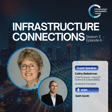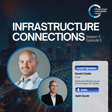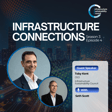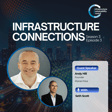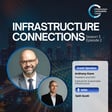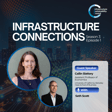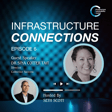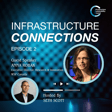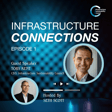
S2E1 - Material Circularity Indicators w/ Steve Porter
Welcome back to Infrastructure Connections, the podcast where we explore what makes sustainable infrastructure work, brought to you by the Infrastructure Sustainability Council. I'm your host, Seth Scott. And hooray! We made it into Season 2.
This season we're exploring Circularity and the role it plays in infrastructure. What better way to start off than by looking at the circularity metrics of steel, a product that is virtually 100% recyclable. Nearly half of all steel is used in the infrastructure and construction industry, things like bridge beams and reinforcing bars and mesh, and much of the rest is used on what uses infrastructure, the planes, trains and automobiles. So today we'll be talking about steel with Steve Porter of Infrabuild.
Steve is Head of Sustainability, Innovation & Trade at InfraBuild Australia, Australia's largest integrated manufacturer and supplier of steel long products. He's spent most of his career as a General Manager in the steel industry, and he is committed to shaping a sustainable, low-carbon future in energy intensive environments.
We discuss circularity initiatives in the steel industry, initiatives like the Electric Arc Furnace which allows phenomenal recycling of scrap metal using renewable energy. We also look at how Material Circularity Indicators (MCI) can enhance EPDs for customers.
For even more information, InfraBuild collaborated on the ISC Impact Notes on the Circular Economy, which you can find here: https://www.iscouncil.org/wp-content/uploads/2024/02/Circular-Economy-Impact-Note_Final-for-Publication.pdf
